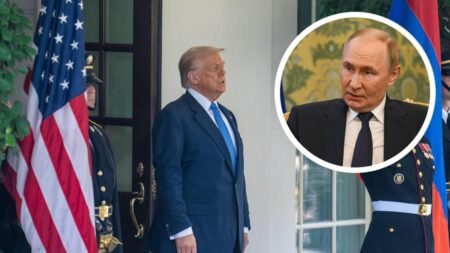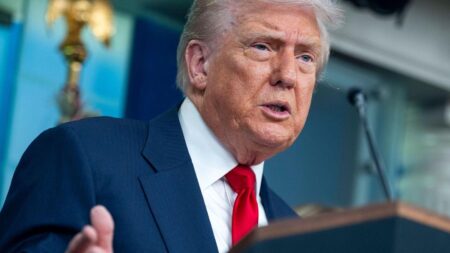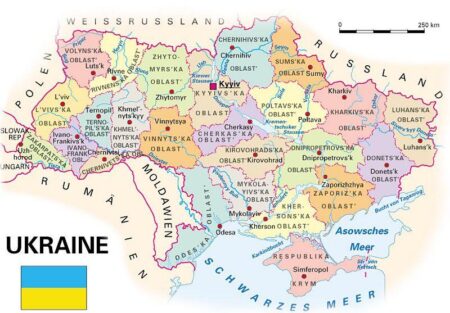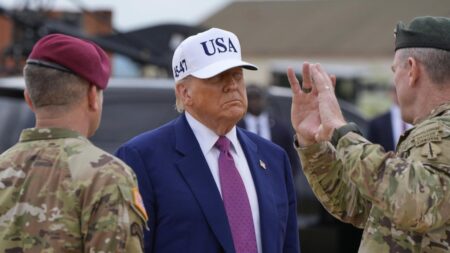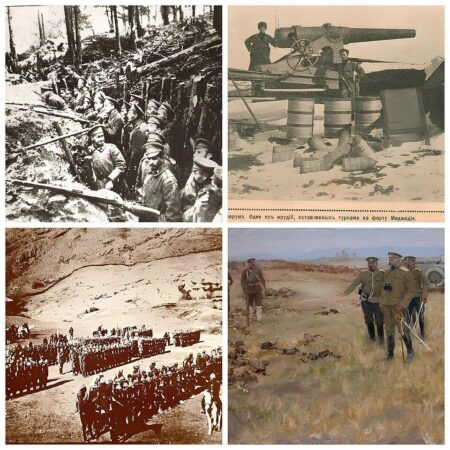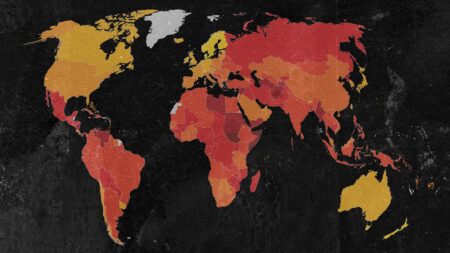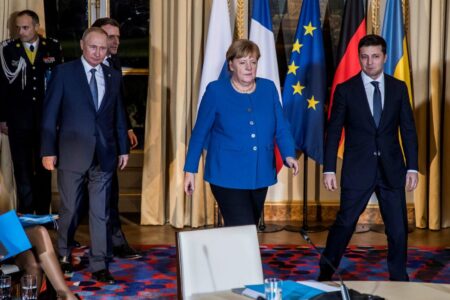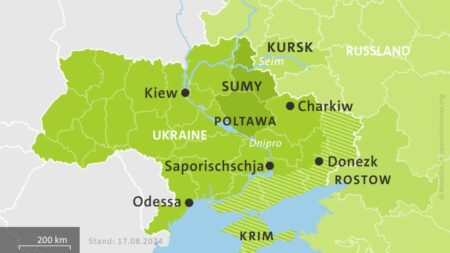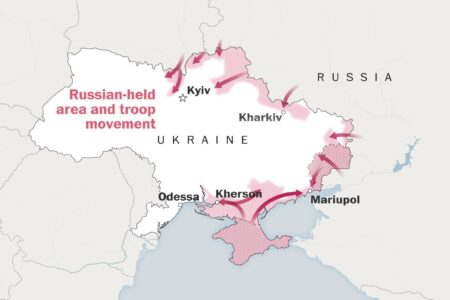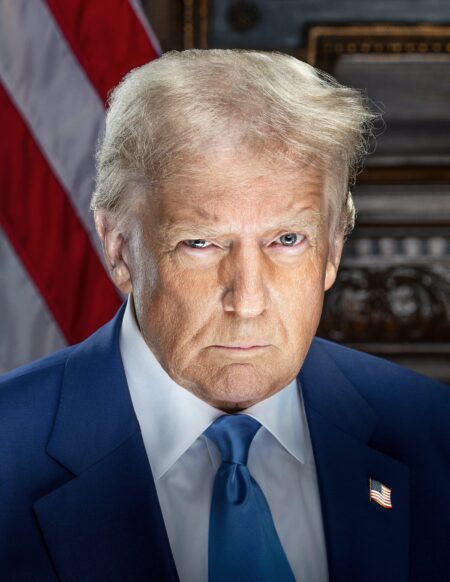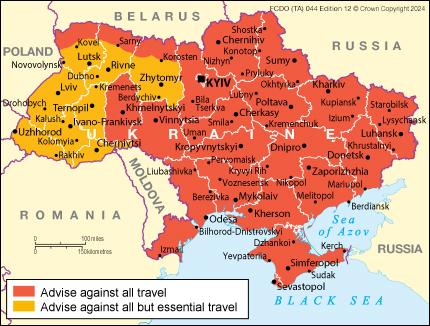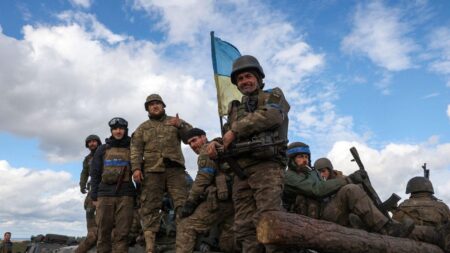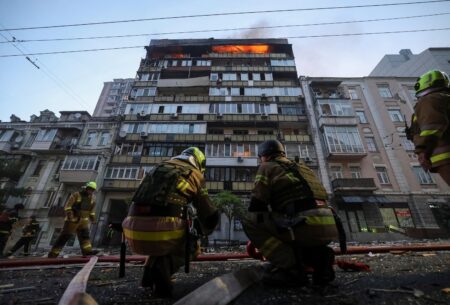Former US President Donald Trump has boldly vowed to champion the return of Ukrainian territory in his upcoming talks with Vladimir Putin. His declaration comes amid rising tensions over Russia’s ongoing invasion of Ukraine
Browsing: Eastern Europe
Former President Trump urged Ukraine to consider a “land swap” with Russia right before his highly anticipated summit with Putin, sparking intense debate over the potential impact on Ukraine’s sovereignty and the region’s stability
The Institute for the Study of War’s August 8, 2025 assessment highlights a dramatic surge in Russian offensives across eastern Ukraine, showcasing significant territorial gains despite escalating logistical challenges and relentless Ukrainian resistance
With a crucial summit fast approaching, Ukraine’s President Zelenskyy boldly vowed never to give up an inch of Ukrainian soil to Russia, highlighting the nation’s fierce determination and unshakable sovereignty amid intense conflict and high-stakes diplomatic talks
Former President Trump’s meeting with Vladimir Putin ignites pivotal questions about the future of the Ukraine war and reshapes his political legacy. This high-stakes encounter could transform global diplomacy and change the trajectory of U.S. foreign policy forever
The Institute for the Study of War released its latest Russian Offensive Campaign Assessment on August 5, 2025, highlighting persistent Russian advances amid fierce resistance and swiftly shifting frontlines in eastern Ukraine
China is carefully charting a delicate course in Ukraine, aiming to foster stability and strengthen economic ties-all while skillfully avoiding direct confrontations with the West amid escalating geopolitical tensions
Russia’s reported capture of the Ukrainian town Chasiv Yar represents a significant strategic victory in the Donetsk region, highlighting Moscow’s determined effort to strengthen its hold over eastern Ukraine amid intense and ongoing battles
In Russia, each military setback is swiftly met with a surge of corruption probes targeting officials and contractors. Experts say this pattern exposes a calculated attempt to shift blame away from battlefield failures, reports The New York Times
School-leavers have emerged as some of the latest Russian casualties in Putin’s war in Ukraine, with countless young recruits thrown into deadly battles on the front lines. Their sacrifices starkly reveal the heartbreaking human cost of this unyielding conflict
A fresh round of Russia-Ukraine peace talks is scheduled for Wednesday, Ukrainian President Volodymyr Zelensky announced. These pivotal discussions aim to explore new paths toward easing the ongoing conflict, sources reveal
Ukraine has unveiled an ambitious new proposal for peace talks with Russia, aiming to reignite stalled negotiations next week amid the ongoing conflict, The Guardian reports. However, neither side has yet confirmed their participation
Sleepless in Kyiv: Ukraine’s capital endures relentless nighttime attacks by Russian forces. Amid blackout drills and piercing sirens, residents courageously navigate life under constant threat, showcasing extraordinary resilience and unshakable unity. (Reuters)
Germany’s Friedrich Merz voiced doubts about Ukraine joining the European Union before 2034, emphasizing the major reforms and tough criteria that still lie ahead for the country, according to The Kyiv Independent
In a stark and somber aftermath, the regions where Ukraine struck into Russia stand marked by devastation and profound loss. The New York Times unveils a haunting portrait of this shattered landscape, exposing the deep human suffering and environmental destruction unleashed by the escalating conflict
Russia has launched a “deliberate” strike on a factory inside a NATO ally’s borders, escalating tensions in an already volatile region, Newsweek reports. Authorities are actively investigating the incident as concerns continue to mount
Former President Donald Trump has pledged to equip Ukraine with Patriot missile systems, boosting its defenses against Russian attacks, NBC News reports. This bold step marks a significant intensification of U.S. support for Ukraine’s military struggle
Ukraine has announced it has taken out Russian agents responsible for the assassination of a top Ukrainian intelligence officer, underscoring the escalating shadow war between the two nations, The Washington Post reports
On day 1,234 of the Russia-Ukraine war, fierce battles rage on amid relentless diplomatic efforts, while humanitarian crises deepen. Explore Al Jazeera’s detailed timeline for the latest frontline updates and vital developments
Russia launched an unprecedented drone assault on Ukraine mere hours after former President Donald Trump targeted Vladimir Putin, escalating the already tense conflict. The attack struck multiple Ukrainian cities, unleashing widespread chaos and disruption

